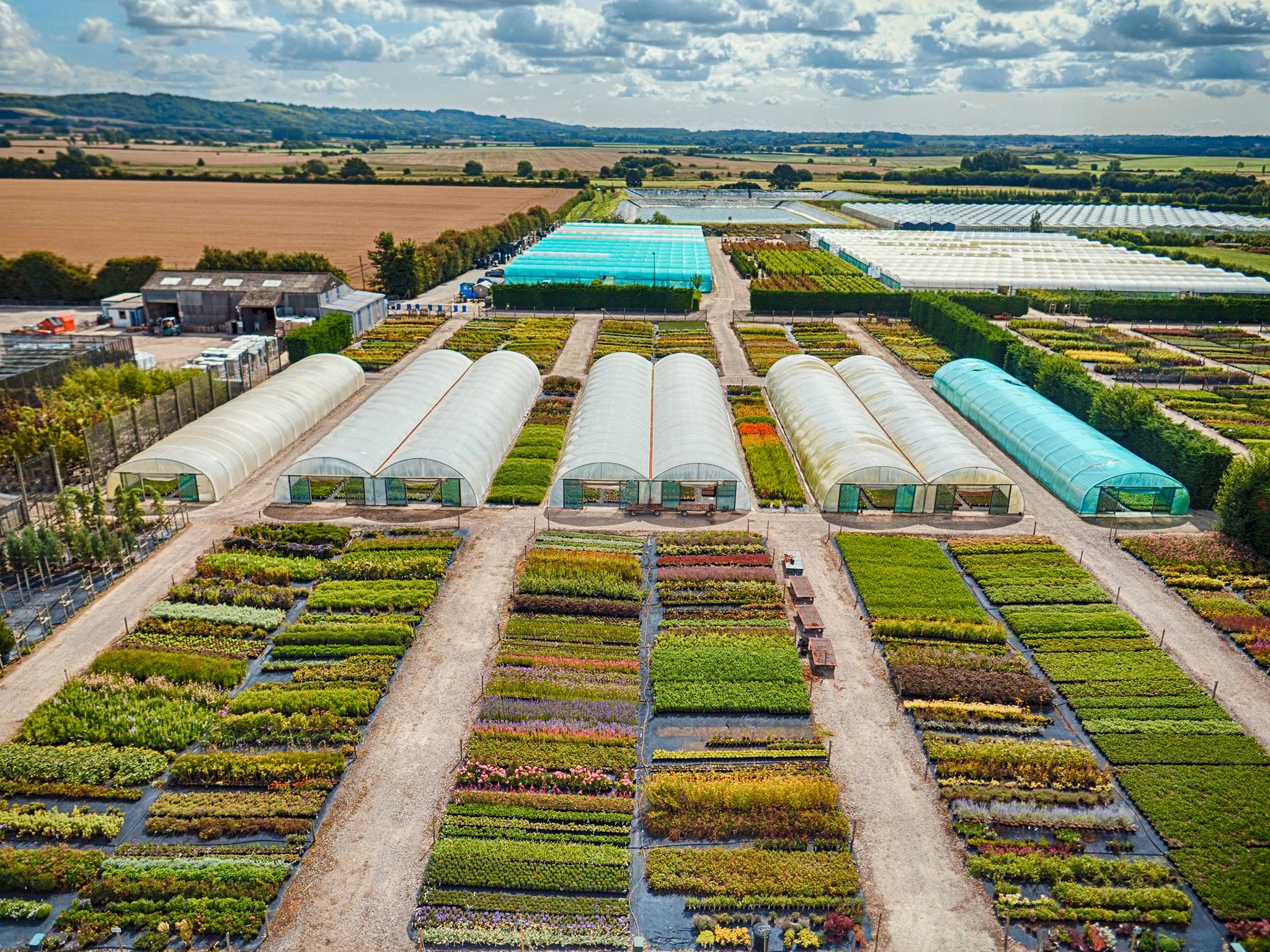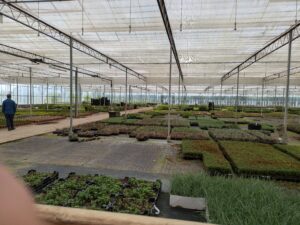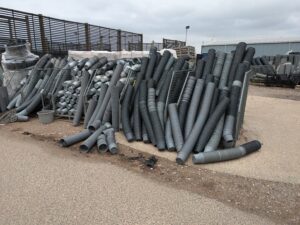
Aeriel view with the Permission of John Langman
John Langman was our host for this visit to Palmstead Nursery, he set up the business in 1968 in Palmstead village with 3 expanding to 11 acres. At this point there was no further space available at the original site, so the whole business – including plants – relocated to Wye and now has grown to cover over 123 acres.
The Palmstead business consists of propagation and supply of plants and trees to the wholesale market across the Home Counties. Local Authorities and new housing developers are significant customers, as are landscape gardeners and contractors. Most plants and trees are sold in pots, although some bare-rooted trees are available.
John took many questions from our group, including the impact of bio-security. The nursery business relies also on border controls (in Ashford) that check for disease on entry to the UK, and currently Palmstead do not import from Italy as there is risk of introducing disease from that country. John also confirmed that Palmstead rely very heavily on peat-free compost, in preparation for the expected total ban on the use of peat for horticultural purposes.
The bulk of our visit was a guided tour through the various elements of the business across a number of aircraft hangar-sized glasshouses (sourced from the Netherlands, where these particular examples were no longer of the standard required for tomato and / or peppers). These buildings were used for different stages of the plant growth:
- propagation – young plants in plugs grown either from seed, or overwhelmingly by cutting or division which preserves the cultivar. The atmosphere in this sealed-off area was maintained at near 100% humidity by virtually continuous misting to ensure the new plants prosper
- potting out – where the young plants grow on and may be moved up pot sizes several times to meet the needs of customers wishing for “instant results” when planted out.

Glass house watering and ventilation is automatically controlled (we listened to the haunting wailing tunes from the ventilation system), and plant pests inside the glass houses (eg two spot – red – mites) are countered by the use of biological control – i.e. introducing other insects to predate the pests.
In the separate potting shed John explained the operation of the machinery that fills pots with compost then, after each pot receives a seedling or plug plant, moves the filled pots to a distribution trailer for onward transport outside. 1.5 people can fill up to 10,000 pots per day.

Outside the glass houses, the nursery covers 30 acres with potted plants and trees; we did not have time to wander across the whole area, but enjoyed the variety of plants and trees in serried ranks of pots. John took us to view one- of the 3 – water collection ponds, two of which each have a capacity of 27000 cubic metres of water – 6 million gallons. These ponds are filled by extraction in Winter and by rainwater and grey water collection from all the glasshouses – this resource is clearly vital to the business as it nurtures so many growing plants.
The visit was eye-opening as regards the control over each process, and awesome as regards scale. All in all, a very enjoyable and informative visit to a very impressive Kent business.

